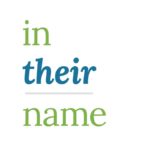As seen in The Globe and Mail by Sunny Dhillon, 15th March 2016
More than half of youths who died in blazes in B.C. between 2005 and 2014 were involved with Ministry of Children, and many were aboriginal, report says
More than half of youths who died in fires in British Columbia over a 10-year period were involved with the Ministry of Children, says a new report that calls for better access to smoke alarms for vulnerable families.
The report, released Tuesday by the B.C. Coroners Service, says 34 children died in residential fires between 2005 and 2014. Twenty-two were involved with the ministry at some point – 17 in the year leading up to their death.
Ten of the 34 children were aboriginal and all 10 were involved with the ministry. Of that group, eight were involved in their final year.
The report recommends that the provincial fire commissioner work with community agencies to improve access to and use of smoke alarms among vulnerable families. It also says the Ministry Responsible for Housing should investigate the feasibility of sprinkler systems in all new homes and fire officials should better share information, and calls for increased fire-safety education.
Mary Ellen Turpel-Lafond, B.C.’s representative for children, said the report raises serious issues involving at-risk youths.
“Substandard housing, poor policies on inspections and safety and general issues relating to family vulnerability appear to be significant risk factors that could be addressed,” she wrote in a statement.
Ms. Turpel-Lafond said there needs to be a greater emphasis on families struggling with “housing insecurity.” She noted aboriginal children were overrepresented in the number of fatalities.
Brent Langlois, executive director of the First Nations’ Emergency Services Society of B.C., said the number of deaths involving aboriginal children was “shocking but not
surprising.” He said past research has indicated aboriginal communities see higher rates of fire deaths.
“Fire death and injury over all in First Nations communities is still far too high,” Mr. Langlois, who was part of an expert panel that contributed to the report, said in an interview.
Mr. Langlois said his organization, which is a registered charity, launched a smoke- alarm campaign two years ago that has seen the installation of more than 20,000 devices in First Nations communities. He said it’s difficult to quantify how widespread the issue of non-working alarms is, due to a lack of data.
B.C.’s Ministry of Children, in a statement, said it cannot comment on specific cases but children can be involved with the ministry for reasons other than being placed in foster care. For instance, it said a child might receive services that are funded by the ministry, such as special needs or mental health.
For children who are in the ministry’s care, it said there are comprehensive safety standards for homes, including functioning windows, emergency exits and smoke alarms. The report says that one of the 34 children died as a result of a fire in a foster home.
B.C.’s Ministry Responsible for Housing, in a statement, said it will be reviewing the coroner’s report. It said it has already formed a fire-sprinkler working group to study fire- sprinkler requirements in B.C.
The report said the 34 children were killed in 22 separate fires. It said residential fires are the fifth-leading cause of unintentional deaths for children in B.C., and children under the age of 10 are the most vulnerable. It also said factors that increase the risk of fire-related death include substandard housing, overcrowded housing, a lower level of supervision of children and a home environment where smoking is present.
The report highlights two incidents with themes common to the other fires. In the first, a child was killed after an older sibling who was playing with a lighter accidentally ignited a mattress and the fire spread. The home’s smoke alarm was not working at the time.
In the second incident, three people were killed after a cigarette is believed to have ignited a couch. It is not known if the residence had a smoke alarm. The coroner said it could not reveal how many of the three people killed in that fire were children, due to privacy concerns.
Michael Egilson, chair of the coroner’s unit that studies child death, said the B.C. fire code requires that smoke alarms be installed outside of sleeping areas in all family residences.
“It’s important that everybody not only have them, but check to make sure they work,” he said in an interview.
While smoke alarms will sometimes have their batteries run out, Mr. Egilson said at other times people might have disabled them to cut down on beeping.

 ‘In Their Name’ is the campaign of ‘The BC Wrongful Death Law Reform Society’ – a BC registered non-profit organization comprised of volunteer families who have lost a loved one to wrongful death in BC and were denied access to justice. In response to the biggest human rights issue facing the province today, our goal is to modernize British Columbia’s antiquated wrongful death legislation, which predates confederation (1846). Under current legislation, the value of a human life is measured only by the deceased’s future lost income, so long as they had dependents.
‘In Their Name’ is the campaign of ‘The BC Wrongful Death Law Reform Society’ – a BC registered non-profit organization comprised of volunteer families who have lost a loved one to wrongful death in BC and were denied access to justice. In response to the biggest human rights issue facing the province today, our goal is to modernize British Columbia’s antiquated wrongful death legislation, which predates confederation (1846). Under current legislation, the value of a human life is measured only by the deceased’s future lost income, so long as they had dependents.